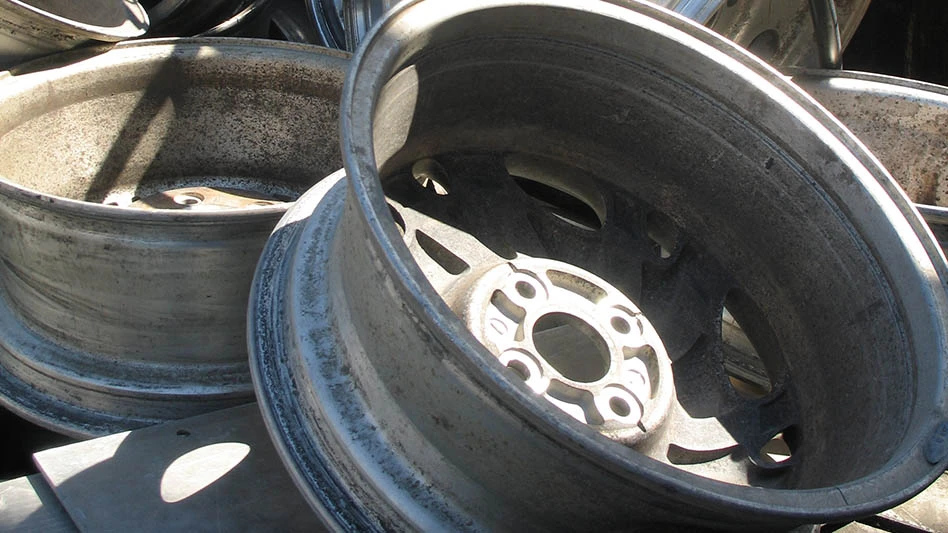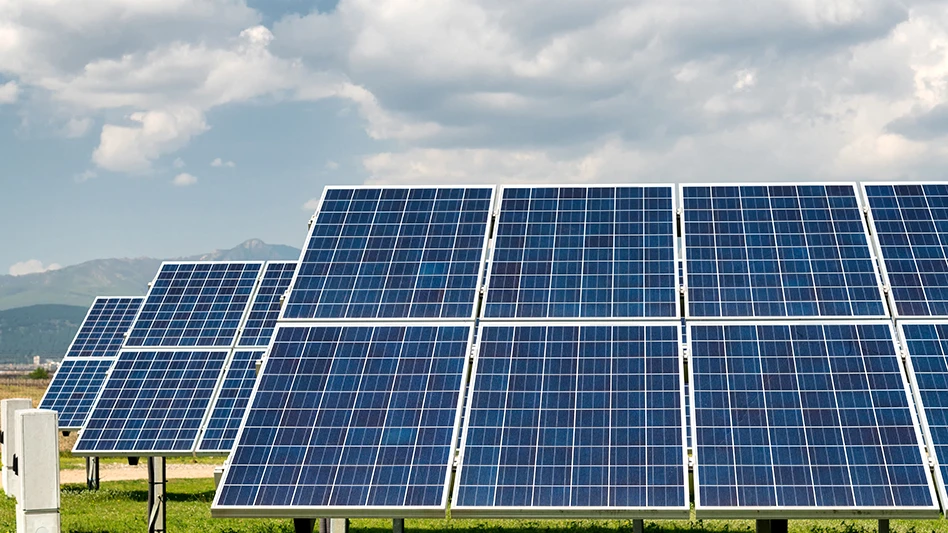 The steel and ferrous scrap industry in Central and Eastern Europe may not have felt the acute pain seen in Western Europe over the past several years. However, it doesn’t mean that countries in this region have avoided many of the pitfalls that have befallen the steel industry in other parts of the world.
The steel and ferrous scrap industry in Central and Eastern Europe may not have felt the acute pain seen in Western Europe over the past several years. However, it doesn’t mean that countries in this region have avoided many of the pitfalls that have befallen the steel industry in other parts of the world.
Central and Eastern Europe, Russia and some of the former CIS (Commonwealth of Independent States) countries remain dependent on many of the same factors that drive the scrap metal market in Western Europe. That the scrap metal industry in Central and Eastern Europe is starting at a far smaller base, and has not as fully established a network of collection and processing systems in place, may have been a benefit. However, as long as the steel industry suffers, ferrous scrap markets throughout the region also will move in slow motion.
Opportunities for Growth
Even though Central and Eastern Europe is starting from a smaller base, Western Europe’s scrap metal industry is recognizing that there are growth opportunities in the region. TSR, a Germany-based metals recycling company, recently acquired a new scrap metals facility in the Katowice area of Poland.
In acquiring the new location, Edwin Leijinse, chair of the TSR Group, says, “Taking over an existing scrapyard in Dabrowa Górnicza (Poland) represents the next logical step in our strategic growth in Poland and should especially strengthen the business in southern Poland.”
Reflecting TSR’s growing interest in Poland and Eastern Europe, the purchase of the new facility is the company’s latest stake in scrap metal processing there. Prior to the acquisition TSR had two operations in Poland: TSR Inowroclaw, which operates a scrap yard and since 2011 has been concentrating on the market in northwestern Poland; and TSR Poland, headquartered in Katowice, which has been active in southern Poland since 2012 as a trading company, up to now without scrap yards.
According to TSR, since joining the European Union, Poland, with a population of close to 40 million people, has seen its metals processing business develop dynamically. Once the newly acquired scrap yard is operating at maximum level, the company expects to process between 8,000 and 10,000 tonnes of ferrous scrap with a more modest amount of nonferrous scrap also being handled.
TSR says it estimates that the market for scrap iron in Poland amounts to about 6 million tonnes per year, of which 1 million tonnes are exported, primarily to Germany and the Baltic countries.
And, while the steel industry in many parts of Central and Eastern Europe is far smaller than in Germany, France, the United Kingdom and other Western European countries, Russia and Ukraine are two of the largest steel producers on the continent. Combined over the first eight months of 2013, these countries produced close to 70 million tonnes, vaulting ahead of most of Western Europe.
Ferrous Challenges
Unfortunately for this region, the steel industry is having significant problems. Evraz Plc, a large Russia-based steel producer, has announced plans to make significant cuts or sell assets as it looks to balance its steel output with demand. In an interim report, made Oct. 18, the company said that consolidated crude steel production declined by 3% for the third quarter of the year, compared to the prior quarter. The company noted the idling of steelmaking at one of its facilities in the Czech Republic as one reason for the decline.
|
Russia Agrees To Adjust Car Recycling Tax Facing mounting criticism over the establishment of a policy that some European countries claimed gave unfair advantage to Russian car makers, Russia’s parliament passed a bill that would require both Russian car makers and foreign auto makers to pay the same recycling fee. The change in policy followed a complaint over the case filed by the European Community (EC) with the World Trade Organization (WTO). According to several reports, the car recycling fee took effect shortly after Russia joined the World Trade Organization. However, in its complaint the EC claimed the fee was a tariff that was put in place following the country joining the WTO. Under the initial policy, small cars that were imported to Russia were assigned a fee of around €420 ($541) and increased with the size of the vehicle. Russia has defended the tariffs on environmental grounds, noting that more than half of the cars now on its roads are 10 years old or older and will soon be scrapped. According to the Wall Street Journal, the bill, approved by the lower house of parliament, calls for the fee to be applied to manufacturers in Russia, Belarus and Kazakhstan beginning in January. The legislation now heads to Russia’s Federation Council, where it is expected to pass. President Vladimir Putin must also agree before it becomes law. |
In commentary following the report, the company noted that the car industry in Europe continues to be tepid at best, despite a more recent uptick in business. While the U.S. steel industry has started to improve, excess capacity in some steel products in Europe is anywhere between 30% and 45%, the company noted.
Adding to the challenges for steel throughout Europe, during the third quarter of 2013 the average selling prices for steel products continued to decrease, reflecting downward trends in the global steel, iron ore and coking coal markets. However, the decrease was less pronounced in prices of steel products predominantly sold in the Russian and CIS markets because of fairly healthy construction and railway markets in the countries.
Meanwhile, the company notes that its Ukrainian mills may boost European shipments as the pursuit of customs integration with the European Union will cut off its market in Russia. In prepared commentary, Pavel Tatyanin, senior vice president and head of international business for Evraz, notes, “Ukraine lost the market in North Africa due to the political instability in the region, so Europe will be a natural destination.”
Adding to the challenges seen in Russia and other Central and Eastern European countries, many Russian plants have been more aggressive with scrap metal purchases in advance of a decline in generation during the winter months. This, one market watcher in Russia says, has helped to keep the price of scrap somewhat healthy.
On a more pessimistic note, however, the analyst notes that more recently auto demand in Russia has weakened. In addition, most of the average car is made of imported metal, which may put further downward pressure on the auto industry in Russia.
Supporting the challenging outlook for ferrous scrap in Central and Eastern Europe, a recent report by the Shanghai Metals Market (SMM) finds that transaction values for some ferrous scrap grades softened in a number of regions. Local traders are concerned about the outlook for prices and underlying demand growth in the final three months of the year.
Additionally, SMM says that CIS exporters remain bearish about the outlook for offshore trade. Tonnages designated for overseas sales have been limited. Turkish importers have sought lower prices this month, which has been driven by the price of competing offers from European and American scrap suppliers.
Export Concerns
End markets have been one of the biggest challenges. Turkey, as well as India, have been in a difficult position over the past several quarters. Supporting this concern, the U.K.-based steel research firm Meps notes that negotiations for October scrap settlements into India are problematic, with secondary steel producers having only modest success. “Secondary steel producers have had mixed success in transferring the additional cost burden of sponge iron and semi-finished steel products on to their customers,” the company reports.
Central and Eastern European scrap metal processing has relied on the Turkish steel industry, along with Western Europe as end markets.
At the Institute of Scrap Recycling Industries’ Commodity Forum, held in Chicago in September, Jarek Mlodziejewski, an analyst with The Steel Index, said Turkey has been moving in and out of the market, playing a significant role in ferrous scrap markets throughout Central and Eastern Europe.
At the beginning of September market participants still regarded the market as stable. High demand from Turkish consumers during August indicated at that time that there could be a shortage of supply.
 Some consumers with high demand chose to negotiate quickly for their September requirements, while others took advantage of the stagnating export market to take their time in closing. At the beginning of September, steel mills in eastern Germany set the tone by raising their offered prices by €10 per tonne compared with August prices.
Some consumers with high demand chose to negotiate quickly for their September requirements, while others took advantage of the stagnating export market to take their time in closing. At the beginning of September, steel mills in eastern Germany set the tone by raising their offered prices by €10 per tonne compared with August prices.
As the market started to turn and prices fell gradually on the Turkish import market during early fall, those consumers who had decided to bide their time profited from the falling prices. Fearing further price weakening, the scrap trade offered large quantities of scrap, which in turn led consumers to believe that scrap supply was more than sufficient.
In the end, September prices on the German domestic market ranged from unchanged up to a €10 markup per tonne, depending on the mill and the scrap grade concerned. Demand was described as normal and the trade emphasized the positive effect of the price adjustments, which created a more uniform price.
The BVSE, Germany’s Federal Association for Secondary Raw Materials and Waste, in its monthly ferrous report, explains that Polish traders had expected price increases, but their domestic consumers did not oblige and offered prices remained unchanged. The Polish mills only announced their intended offered prices after the German mills had closed their negotiations; some west Polish traders then tried to sell scrap on the German market, but the German mills had already made adequate purchases from domestic suppliers.
The BVSE also reports that the Euro, which during the September period had risen from 1.32 to 1.35 to the U.S. dollar, ultimately increased the cost of scrap being exported from Europe, especially to Turkey, making it less attractive. This has become even more pressing as India, which had been a relief valve for many European scrap metal dealers, is seeing a sharp decline in imports. During the first half of 2013 around 102,000 tonnes of ferrous scrap was exported to India, compared with 228,000 tonnes shipped during the same time in 2012.
The author is senior editor of Recycling Today Global Edition and can be contacted at dsandoval@gie.net.
Latest from Recycling Today
- RMDAS April figures show recycled steel price setback
- Steer World offers PEX plastic recycling machine
- New recycling grant program launches in Massachusetts
- Tire Recycling Foundation names executive director
- Dock 7 named 2025 Exporter of the Year at New Jersey International Trade Awards
- Waste Connections reports ‘better than expected’ Q1 results
- Commentary: How EPR is transforming the packaging industry
- Acerinox names new North American Stainless CEO






